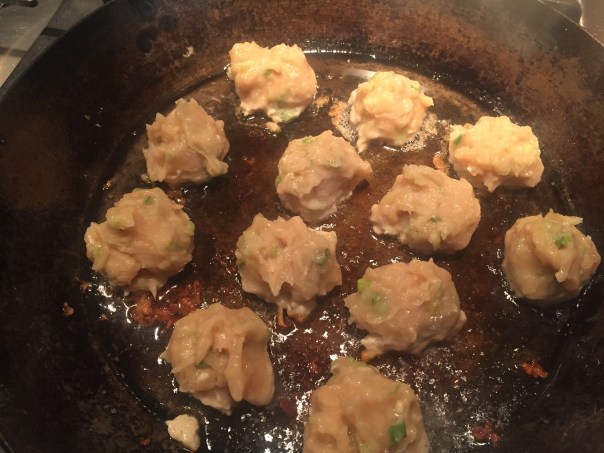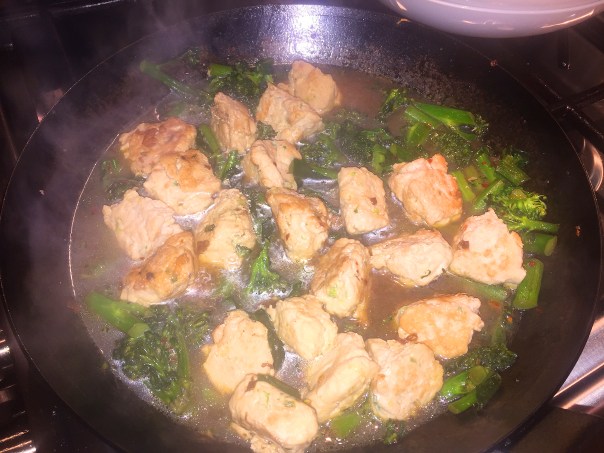There is just nothing better on a cold Winter’s day than dining on a sumptuous braised chicken dish. Enter Molly Stevens, one of our all-time favorite cookbook authors. This recipe, Whole Chicken Braised with Pears and Rosemary, is from her All About Braising cookbook, practically a bible in our kitchen.
It’s a lovely alternative to roast chicken. Even better, in fact, because the chicken makes its own pear-and-rosemary-scented sauce as it braises. The secret is stuffing a quartered pear and a few branches of rosemary into the cavity before braising. As the chicken simmers to tenderness, the pear juices flow into the meat, embellishing it with a subtle sweetness.
The pear-enriched chicken drippings mingle with the braising liquid to create a complex sauce with a hint of fruit and a whiff of rosemary. You will be drooling before the meal is even plated. Russ made the comment “The sauce is so good I could drink it straight!”
Yes, it is a bit prep-intensive and the braising time is 1 1/4 hours, then you have to finish the sauce, so it’s not a quick weeknight meal, but oh my, your family will be thanking you for having served them heaven on a plate!

Russ cut off the wings so that it would be easier to brown all over.

After the chicken is seasoned with salt and pepper inside and out, stuff the cavity with pears and rosemary.

The stuffed bird is now trussed according to directions.
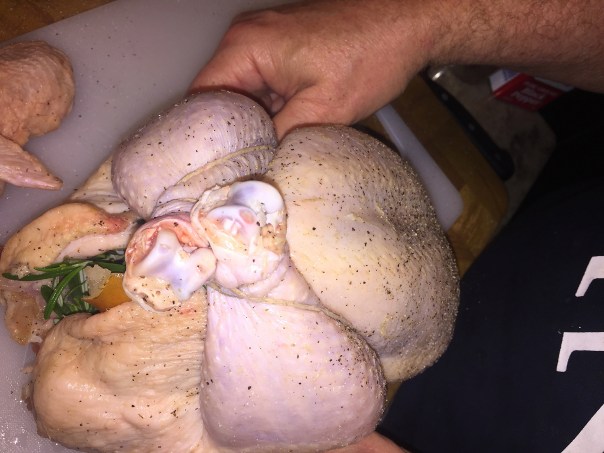
Once the bird is all tied up it’s ready to be seared in the braising pot.

Start searing the bird on it’s breast side for 4 minutes.

Turn the chicken every four minutes or so to get a nice brown color on all sides.

After the bird is seared, remove it to a plate and sear the wings, gizzard and neck.
Whole Chicken Braised with Pears and Rosemary
The Braise
- One 3 3/4 to 4 1/4 pound chicken
- Coarse salt and freshly ground black pepper
- 1 just-ripe Bosc pear
- 3 leafy fresh rosemary sprigs
- 2 tablespoons unsalted butter
- 1 tablespoon extra-virgin olive oil
- 1 1/3 cups finely chopped leek, white and pale green parts only
- 1/4 cup finely chopped shallots (2 medium)
- 1/4 cup dry white wine or dry white vermouth
- 1/2 cup chicken stock, preferably homemade
- 1 tablespoon white wine vinegar
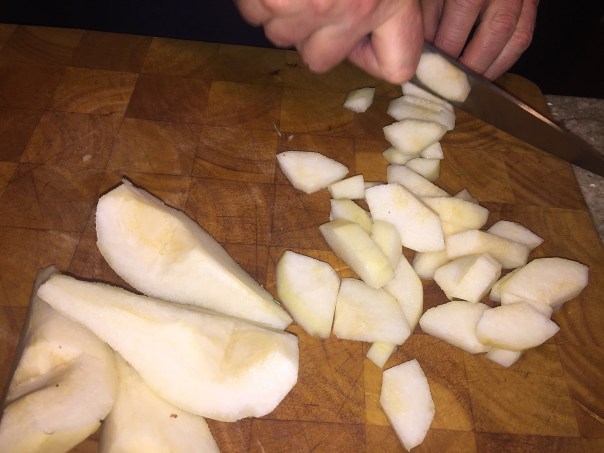
Peel and core 2 ripe, but firm bosc pears; quarter and slice into 1/2″ thick pieces.

The pears cook in butter in a sauté pan then sugar, rosemary, salt and pepper are added.

The pears are checked for doneness with a sharp knife.

Once the pears are caramelized, add the balsamic vinegar.
The Pear Garnish
- 2 just-ripe Bosc pears
- 2 tablespoons unsalted butter
- 2 teaspoons sugar
- 1 teaspoon finely chopped fresh rosemary
- Coarse salt and freshly ground black pepper
- 1 tablespoon balsamic vinegar
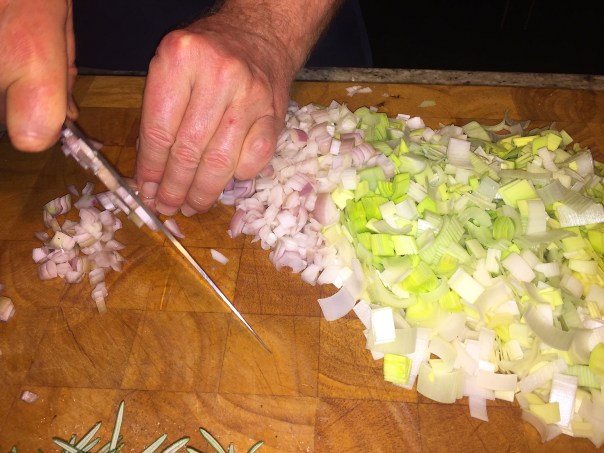
Dice the shallots and leeks.

Add more butter to the pot and toss in the leeks and shallots.
 A rosemary sprig is also added to the sautéing veggies.
A rosemary sprig is also added to the sautéing veggies.

Place the chicken on top of the vegetables, breast side up, and pour in any juices that seeped onto the plate where it rested.
Directions
- Heat the over to 300 degrees.
- Rinse inside and out with cool water and dry completely. Season inside and out with salt and pepper. Cut the pear (unpeeled and uncored) into quarters and stuff into the cavity. Slide two rosemary springs alongside the pear.
- Truss the chicken with kitchen string: Loop the middle of the string around the ends of the two drumsticks to pull them together. Next, bring the ends of the string back alone the sides of the chicken, running the string between the leg and the breast on both sides, then turn the chicken over and snag the string over the base of the neck. Knot the string securely and trim off the string close to the knot.
- Heat 1 tablespoon of the butter and the oil in a medium Dutch oven. Pat the surface of the chicken dry again (the drier it is, the better it will brown and not stick to the surface.) Gently lover the chicken, breast side down into the hot pan.
- Brown the chicken without disturbing it for about 4 minutes, then nudge one side with a wooden spoon and peek to see whether the skin has developed a deep brown color. When it has, maneuver the chicken onto one side and continue cooking on each side until all four sides are are an appealing roasted brown color, 12 to 18 minutes total. Lift the chicken and set it aside on a large plate.
- Pour off all the fat from the pot and discard. With a damp paper towel, wipe out any burnt specks from the bottom of the pan, being careful to leave behind all the delicious caramelized bits. Return the pot to medium heat and add the remaining tablespoon of butter.
- Add the leek, shallots, and remaining rosemary sprig, season with salt and pepper, and sauté, stirring occasionally with a wooden spoon for about 7 minutes. Pour in the wine, raise the heat to medium-high, and boil, stirring until the wine is reduced by half, about 1-2 minutes. Add the stock and white wine vinegar, and boil for 2 more minutes to meld the flavors.
- Place the chicken on top of the vegetables, breast side up, and pour in any juices that seeped onto the plate where it rested. Set a tight-fitting lid in place. Slide the pot into the lower third of the oven. Braise, basting every 20 minutes with a large spoon, until an instant read thermometer reads 170 degrees when inserted between the breast and the thigh, about and hour and fifteen minutes.
- Meanwhile, prepare the pear garnish. Peel the pears, cut them into quarters, remove the cores, and then cut each quarter crosswise into 1/2 inch thick slices. Heat the butter in a large skillet over high heat. Add the pears and toss to coat with the butter.
- Add the sugar, rosemary, and salt and pepper to taste. Saute briskly, shaking the skillet and turning the pears frequently, until they begin to caramelize on all surfaces, about 5 minutes. Add the balsamic vinegar and continue to shake and stir until the vinegar has reduced to a glaze that coats the pears, barely 30 seconds. Transfer to a large plate, spreading them out so they will stop cooking and do not steam and become mushy while you finish the sauce.
- Remove the chicken from the pot by spearing a meat fork into the cavity, tipping the chicken toward you so that the juices run back into the pot, and lifting gently, and set the chicken on a carving board. Tent with foil to keep warm.
- Strain the braising liquid into a small saucepan, pressing down lightly on the vegetables, to extract as much liquid as you can. Discard the vegetables. Using a wide metal spoon, skim the clear surface fat from the sauce. Set the sauce over medium-high heat and bring to a gentle boil. Simmer the sauce to concentrate the flavor and give it some body, about 6 minutes. The sauce should be the consistency of a thick vinaigrette. Taste for salt and pepper. Add the pear garnish to the sauce to warm through.
- Carve the chicken and spoon some sauce and pears over each serving.

Remove the chicken from the pot by spearing a meat fork into the cavity, tipping the chicken toward you so that the juices run back into the pot.

Strain the braising liquid into a small saucepan, pressing down lightly on the vegetables.

Discard the vegetables. Set the sauce over medium-high heat and bring to a gentle boil.
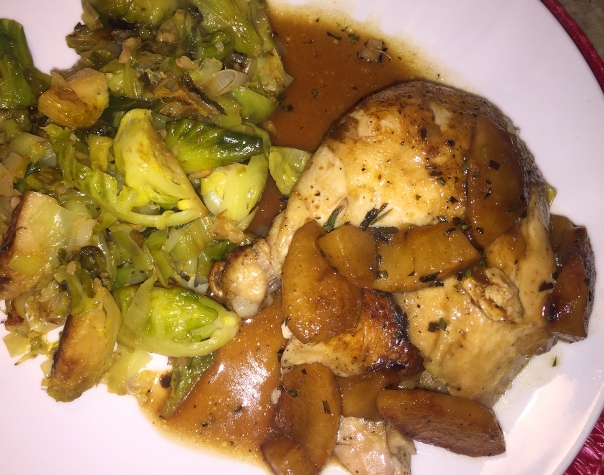
Carve the chicken and spoon some sauce and pears over each serving, and plate with your favorite sides.




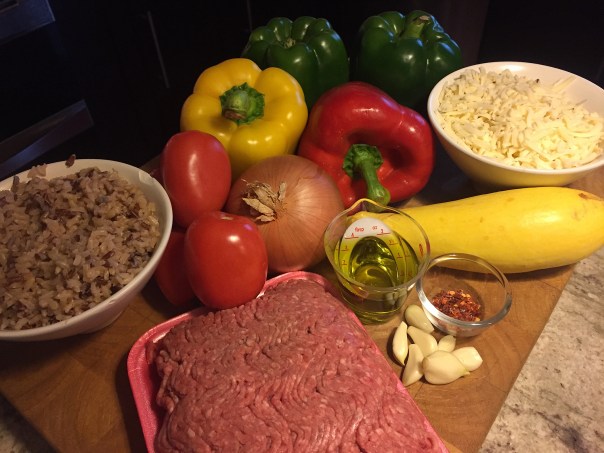

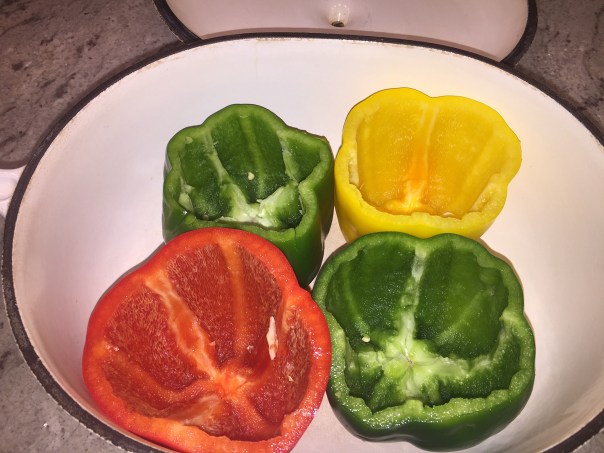

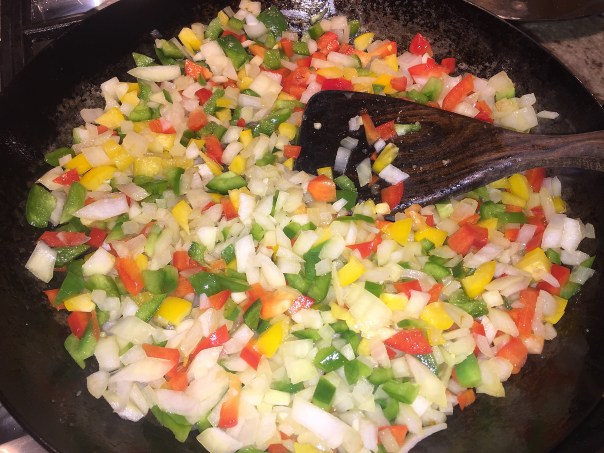
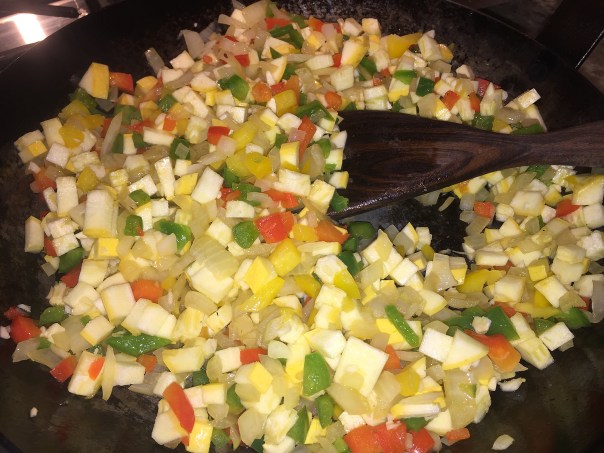

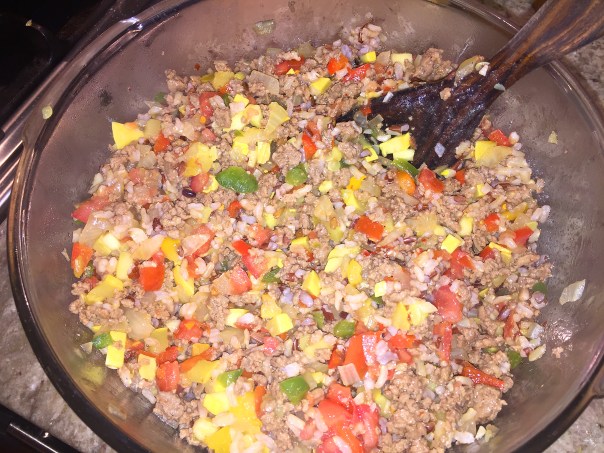
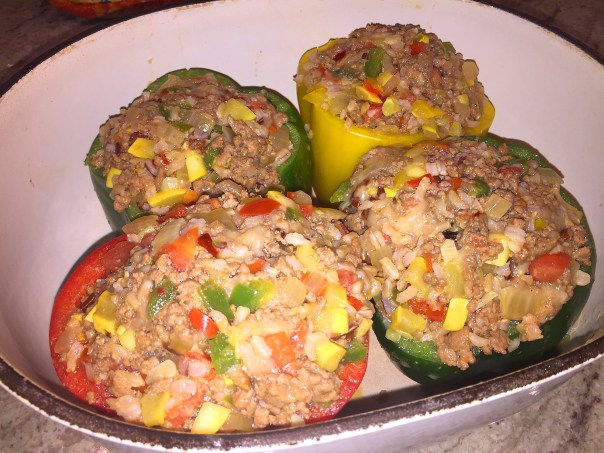
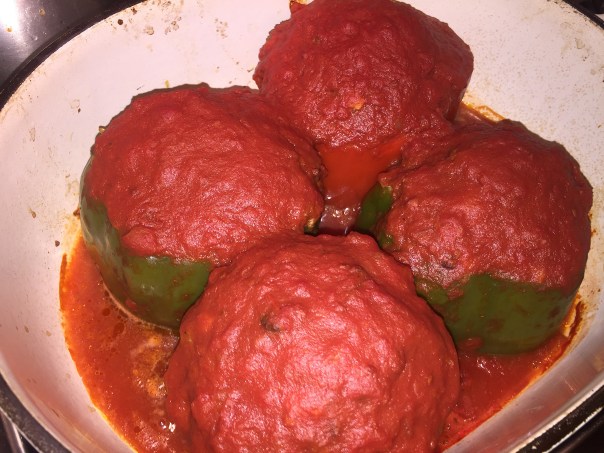






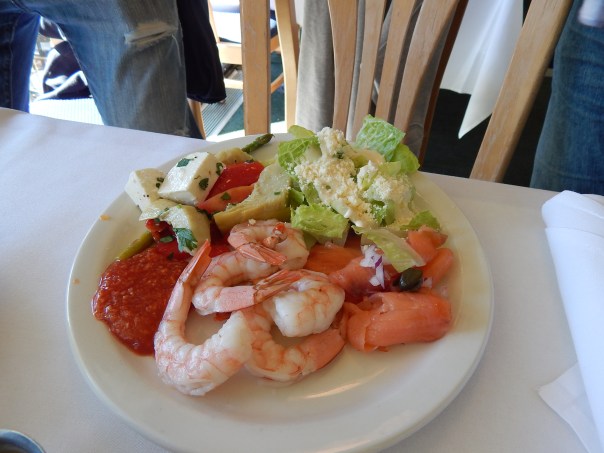
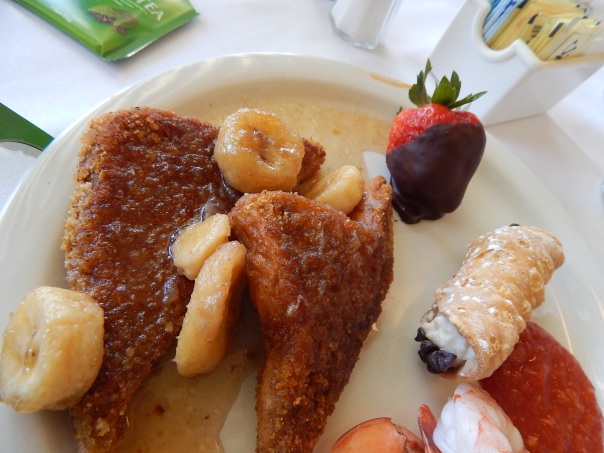



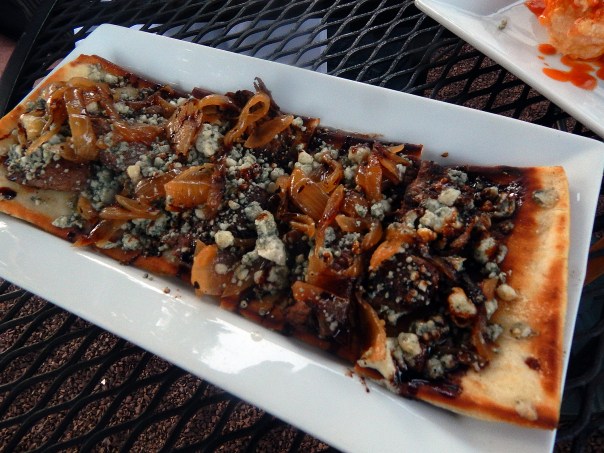










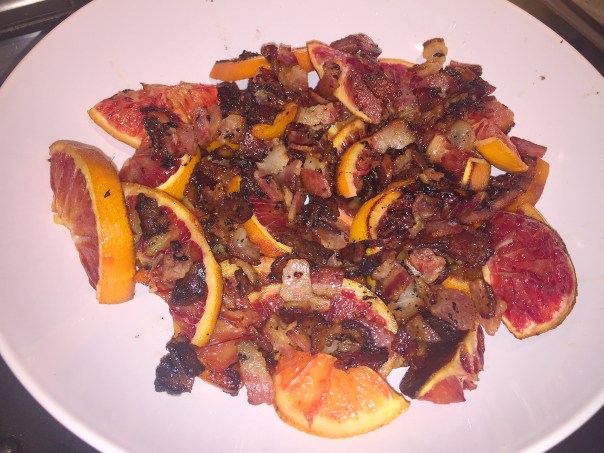 Next, roast the bacon on the same baking sheet for about 12 minutes then transfer to the plate with oranges.
Next, roast the bacon on the same baking sheet for about 12 minutes then transfer to the plate with oranges.
 The colors alone make you eat with your eyes.
The colors alone make you eat with your eyes.

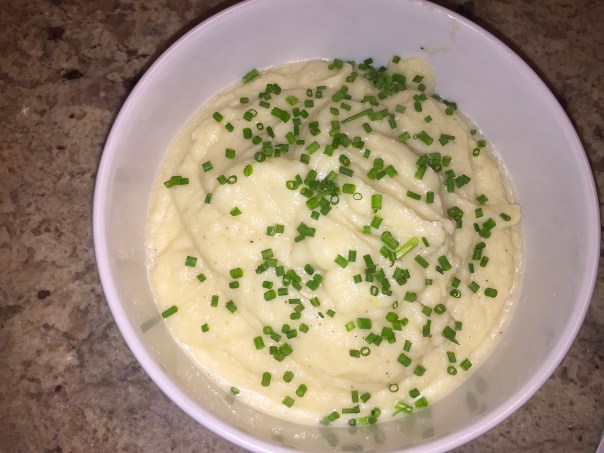


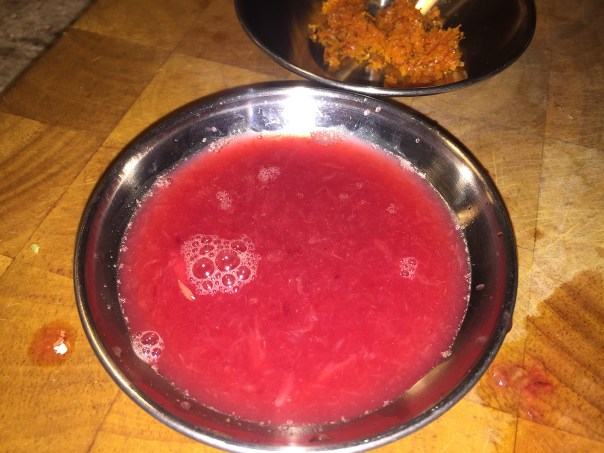

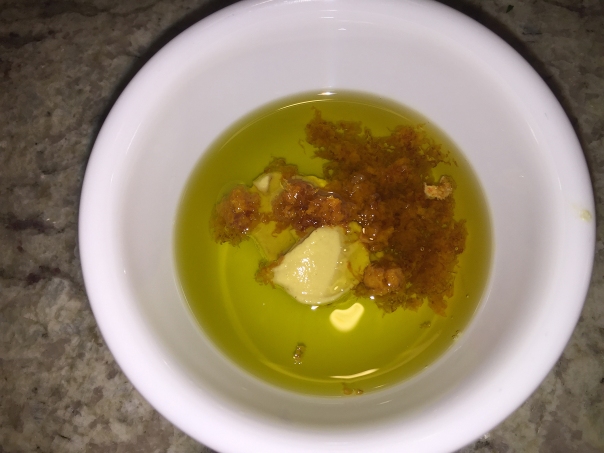

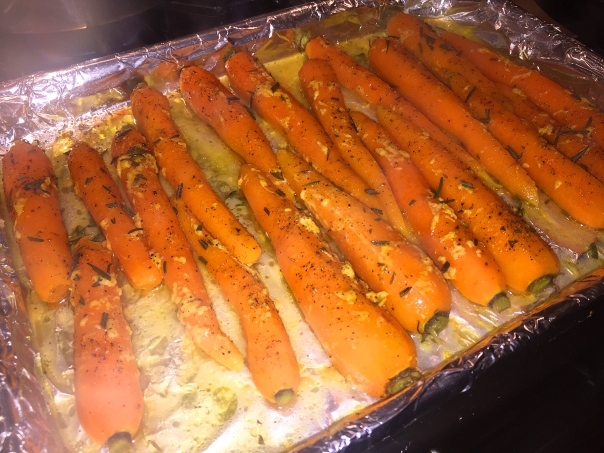



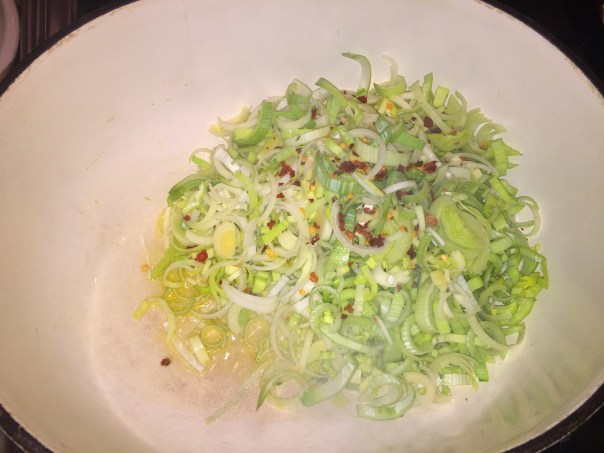


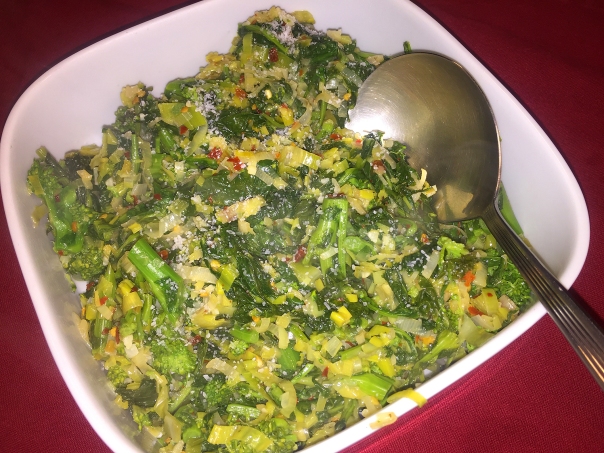





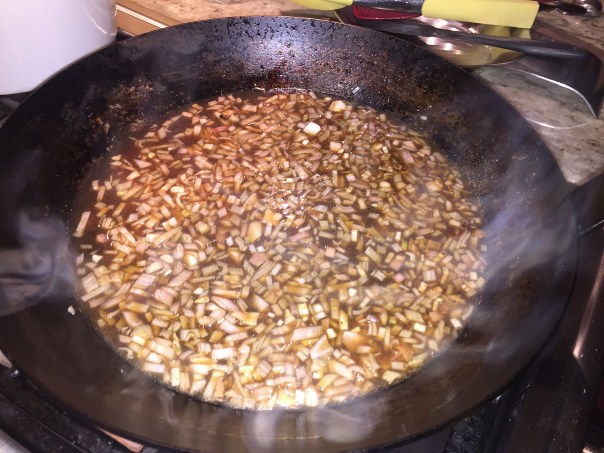
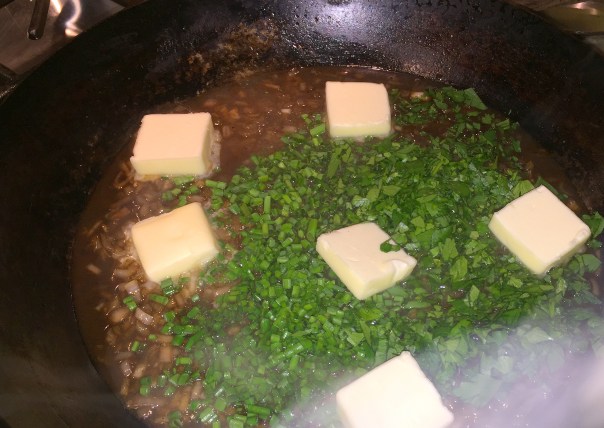



 Arrange the meat on a platter, pour over the juices from the carving board and then spoon on some of the shallot mixture.
Arrange the meat on a platter, pour over the juices from the carving board and then spoon on some of the shallot mixture.




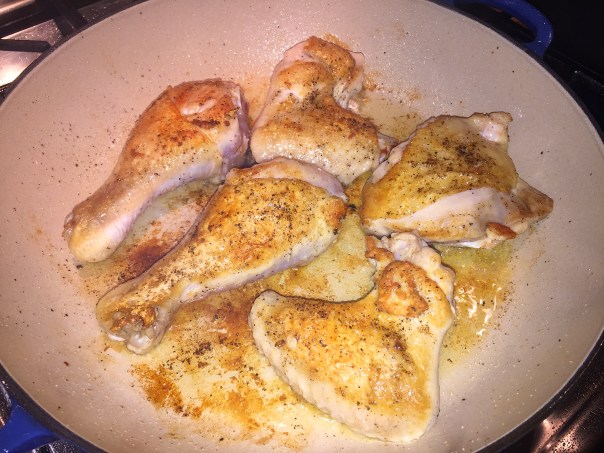

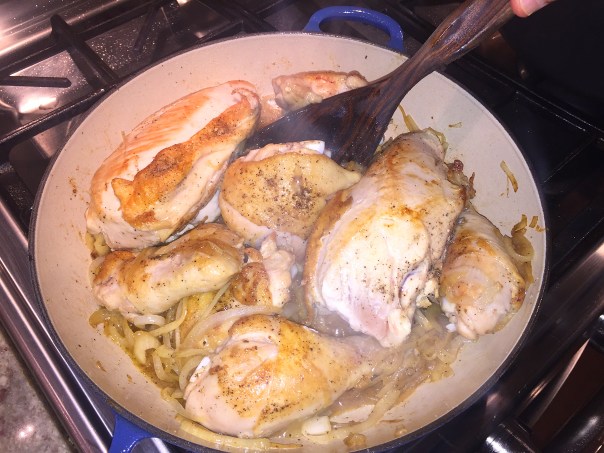


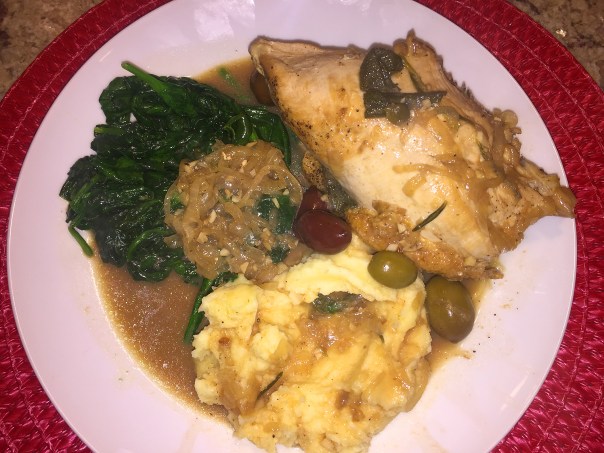

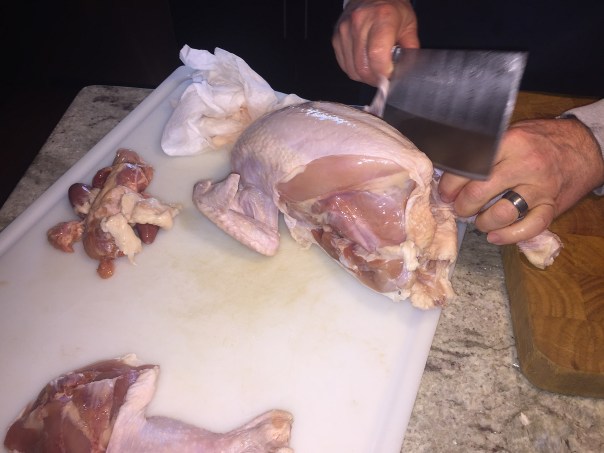
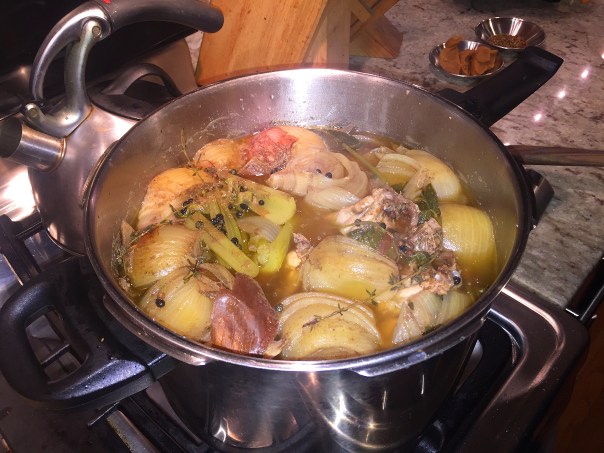

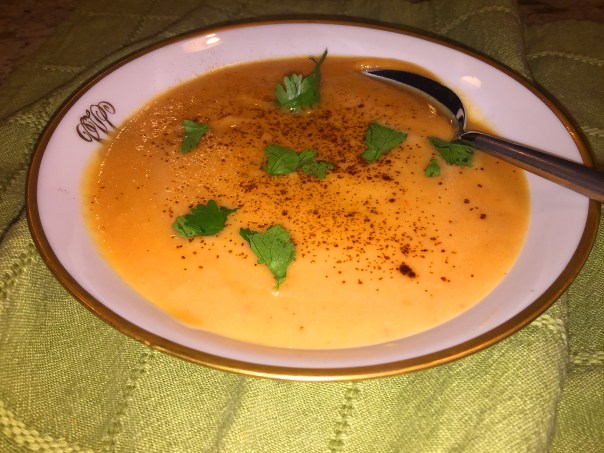

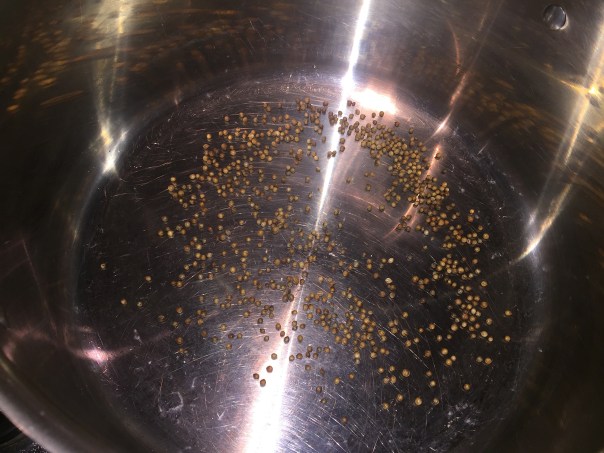





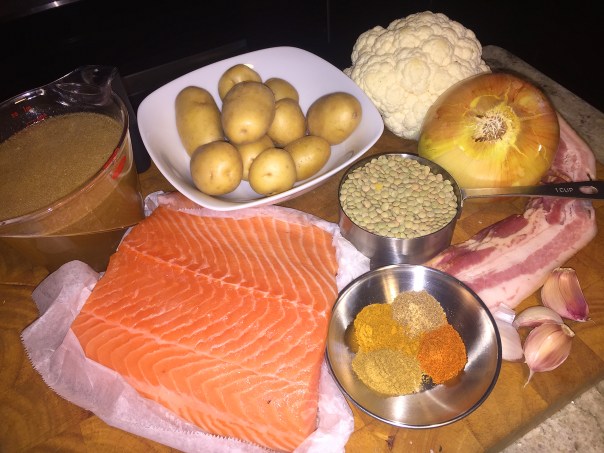





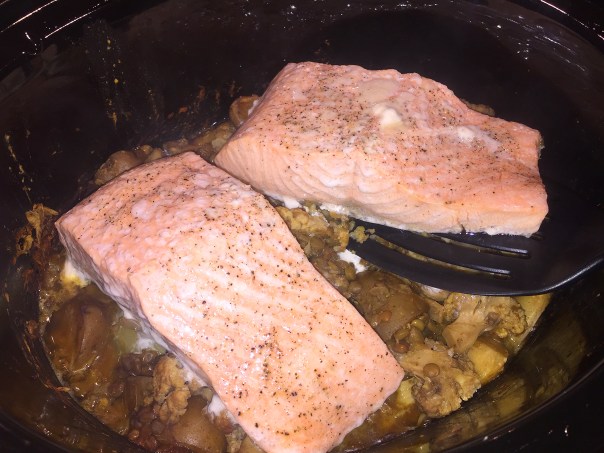
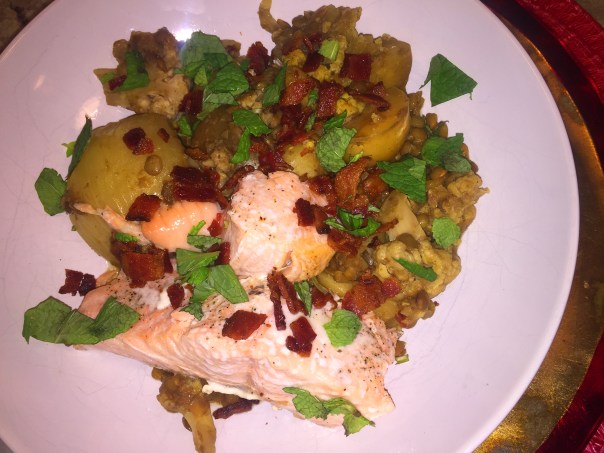


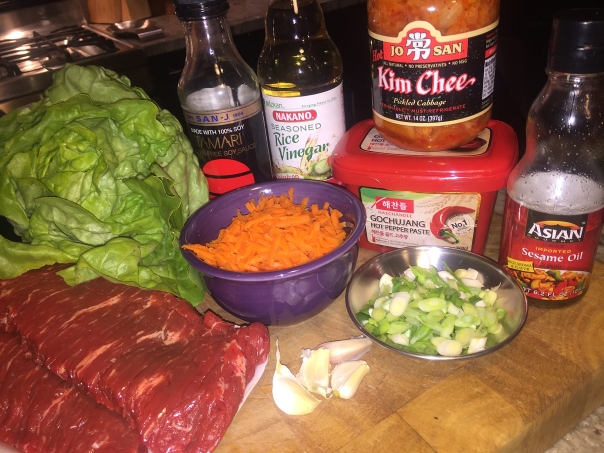
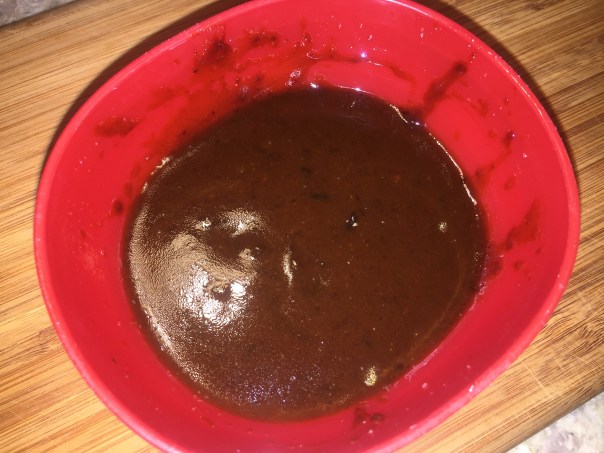




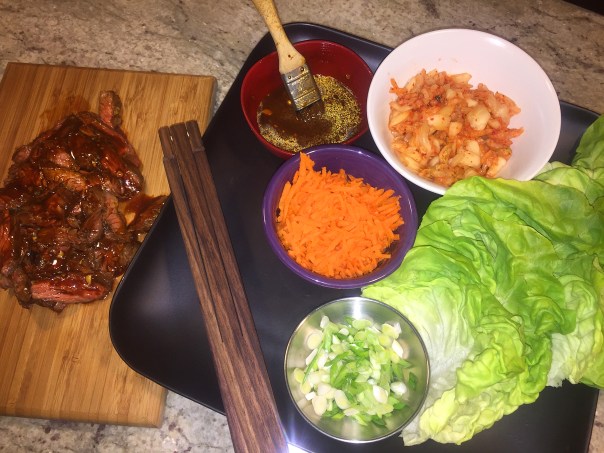


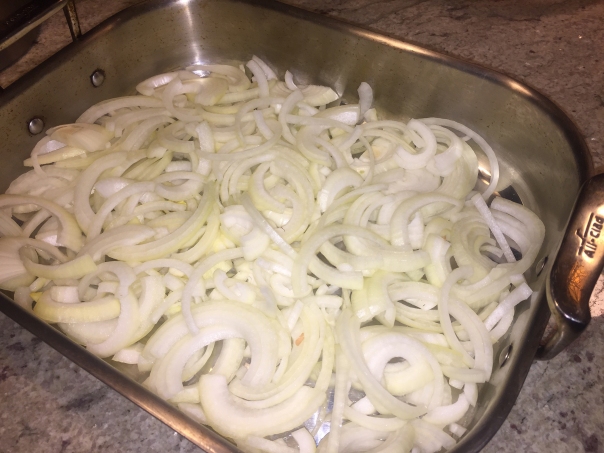





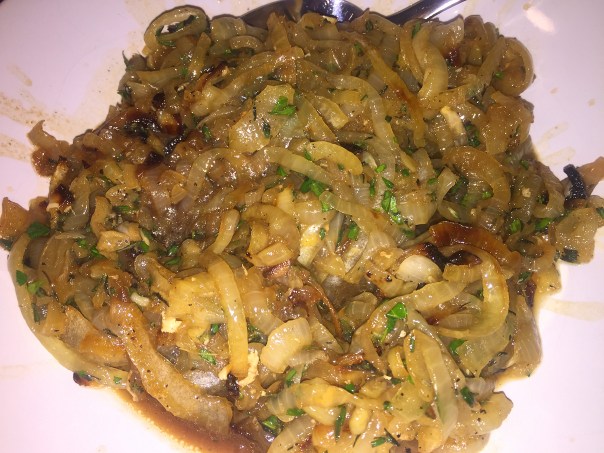
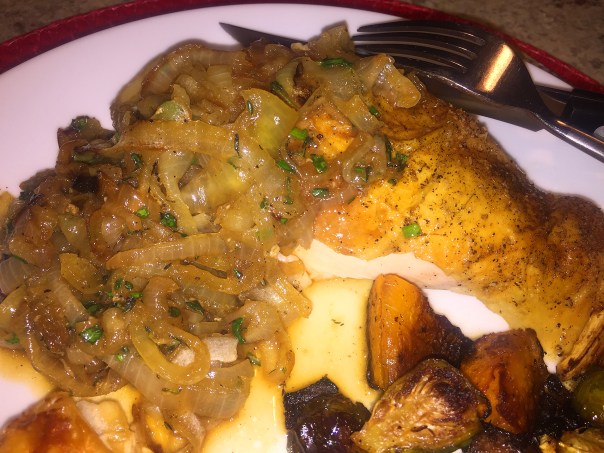



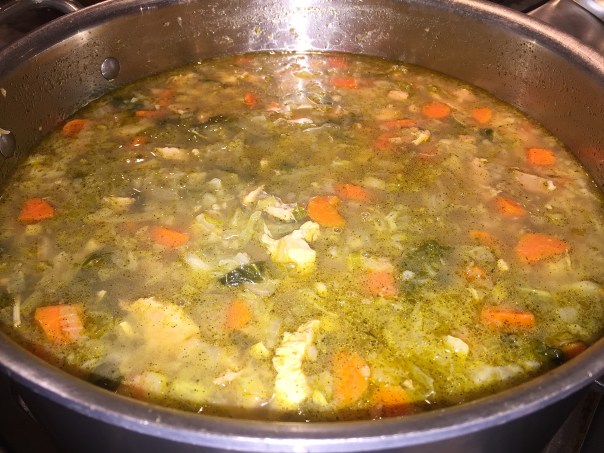




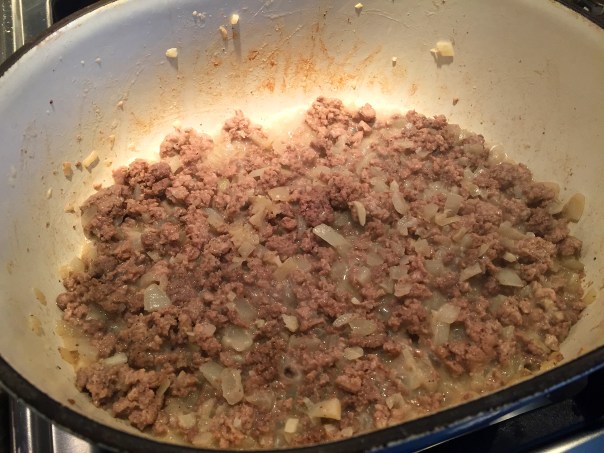

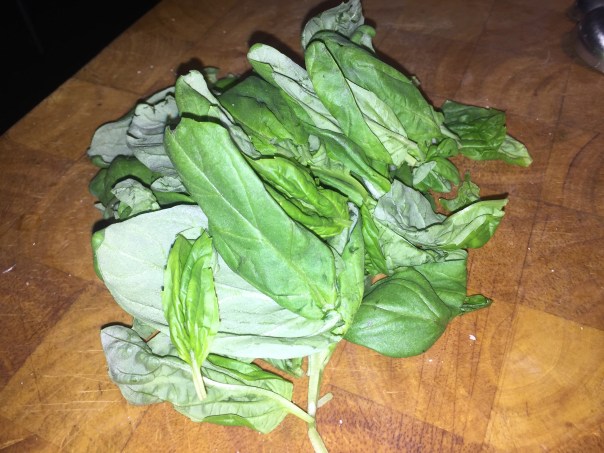



 No-cook lasagna noodles are placed on top of the bottom meat sauce.
No-cook lasagna noodles are placed on top of the bottom meat sauce.

 An edible work of art!
An edible work of art!


